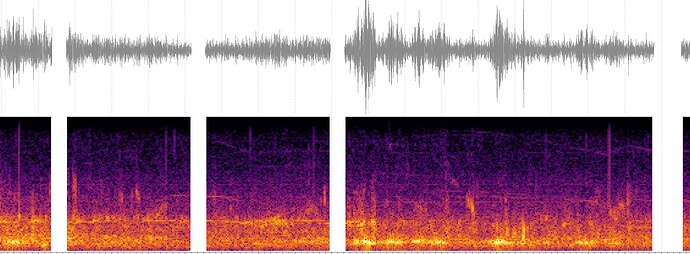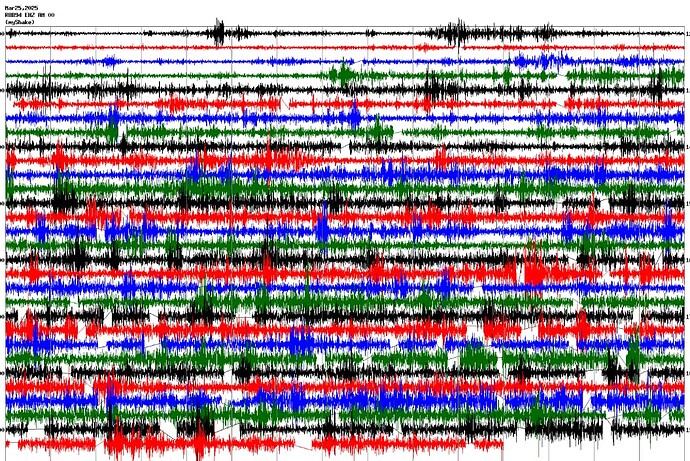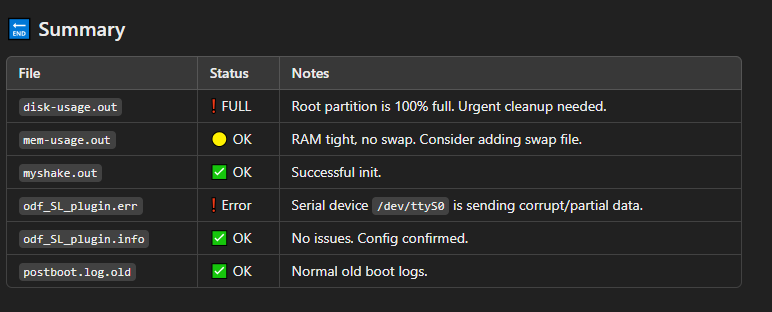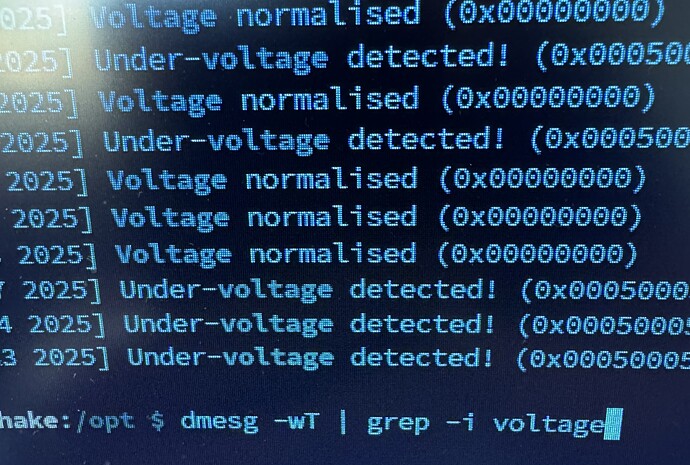Hello adamslab,
Thank you for the logs and the screenshots. Indeed, if the helicorder is also displaying these gaps, then the issue is a local one, and not a data connection/transmission one.
In the logs, while the Shake starts correctly, a lot of “gibberish” mixed with other errors can be found, indicating potential power supply or corruption issues:
2025 084 19:28:59>> No Data has been received from the MCU in 12 read attempts.It appears the MCU is not transmitting data. This is a fatal condition and should be investigated if this condition persists!
2025 084 19:28:59>> Data has been successfully received, fatal condition resolved.
2025 084 19:28:59>> internal error: buffer overflow! cannot process read data...
2025 084 19:28:59>> buf: {gF�`F.DF$cb��`� sA;F�`§rFwctEæDjæ'`cd3'kkB`wdb�d32F'FD²dfvV�dfvV�`§vFsg% sfjnE`@jfA`'jnF`�d'|FDd72FU#D`c�dd;f
2025 084 19:28:59>> 16063 44
In such cases, we recommend our standard troubleshooting path, which I have attached below.
My first thought (and the probable cause of the gaps) would be to check and see if the current power supply you are using is continuing to deliver a stable voltage between 5.0 and 5.2V and a current of at least 2.5A at all times (3.0A if the Raspberry Pi board that is being used is a RPi4), as a decrease in power could lead to data services interruption. If possible, you can check this by temporarily removing the Shake from the vault and connect its standard power supply to a single wall socket. And, if you have another Pi power supply you know is in working condition, please try to exchange the current one with that and see if the Shake now correctly works for extended periods.
A second check that you can do is to see if all the connections between the sensor, the blue Shake board, and the Pi board are still solid and free from dirt or any other element that could compromise transmission. And, as usual, if you decide to disassemble the Shake when doing this, please ensure you are using proper ESD (ElectroStatic Discharge) protection (such as gloves, etc.).
As a last resort, and if all these checks come out as positive and the Shake is still not working, then I would recommend re-burning the microSD card again (or using a different microSD) after formatting and erasing all its data/partitions first (you can use DISKPART for this as it is very efficient), and see how the Shake behaves with the newly installed system, removing potential issues derived from corrupted files. I will leave the burning instructions link here for your convenience: microSD card topics
Thank you for your collaboration.




